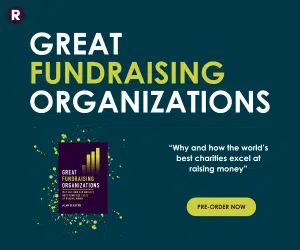Regular customised communications reduce face-to-face donor attrition


Additional analysis of last year’s Public Fundraising Regulatory Association (PFRA) Attrition Survey has yielded two clear lessons for charities keen to reduce attrition rates for donors recruited through street, door-to-door or face-to-face fundraising.
According to the first survey of charities engaged in these fundraising methods, those that customise at least one part of their communications with donors will see significantly lower attrition, or cancellation rates, than charities that do not.
In addition, charities that communicate with their donors between three and eight times each year will benefit from enhanced retention rates than those that communicate just once or twice per year.
Advertisement
The analysis is based on the donations of over 377,000 regular giving donors.
The PFRA Attrition Survey 2008 was devised and set up by Morag Fleming, Head of Fundraising at the charity Quarriers and Rupert Tappin, MD of professional fundraising organisation Future Fundraising. It succeeded in establishing the first set of benchmarks for attrition from face-to-face fundraising.
Towards the end of 2008, at the suggestion of Fleming and Tappin, the PFRA funded additional in-depth research of the data contained within the survey, to analyse how various forms of donor development might impact on subsequent levels of donor loyalty.
The research was carried out by Adrian Sargeant, Professor of Fundraising at the Center on Philanthropy, Indiana University.
Charities were asked to specify which methods of donor development they used for each of the campaigns they submitted to the PFRA Attrition Survey last year.
These included:
• Welcome calls, texts or e-mails
• Standard or customised newsletters or e-newsletters, with or without appeals
• Engaging donor in non-financial activities, such as surveys, campaigning or volunteering
• Frequency with which they communicated with their donors
• When they first attempted to upgrade their donors, if at all.
Adrian Sargeant said: "the issue of whether or not to customise communications received by donors is key here. We found that those who received a customised newsletter with appeals exhibited a higher degree of loyalty than those who did not receive this form of communication.
"When designing a donor development strategy, we would encourage all charities to consider customising at least one aspect of their communications for face-to-face donors – doing so will impact positively on loyalty."
Morag Fleming said: "Our findings have demonstrated in the clearest possible manner that how charities communicate with their donors can dictate the amount of money they raise across the short, medium and long-term."
Mick Aldridge, CEO of the PFRA, said: "Face-to-face fundraising is breaking new ground in terms of transparency and accountability to the charity sector, through the funding of robust pieces of research such as this."

The survey will be re-run later this Spring, and all charity members of the PFRA, past and present, are being invited once again to take part.
Donor payment patterns from face-to-face campaigns run in 2007 and 2008 will be sought, and it is expected that an insight into the effect of the current economic climate on regular giving retention behaviour will result.
Full details of the donor communications report, together with the updated attrition benchmarks for face-to-face campaigns, will be presented by Morag Fleming and Rupert Tappin at this year’s Institute of Fundraising National Convention 2009 on 6 July.
The results of the survey will also be made available free of charge to all participants.
www.pfra.org.uk



